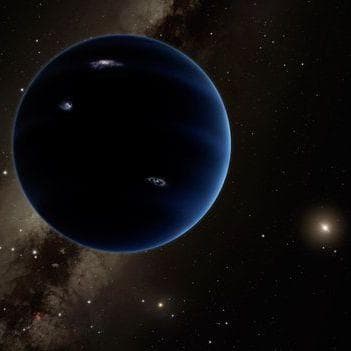-
(#1) Creation Took Six Days, and the Earth Is 6,000 Years Old
Young Earth Creationism holds strictly to the definition of creation in Genesis - God made the world in six days, with time beginning around 4,000 BC. This definition has been prominent in Protestantism since the Reformation, with Martin Luther being among its first notable proponents. While there are strands of creationism that don't accept this, instead believing in the scientifically given age of the earth, all creationists believe that humans were created by God, either directly or through divine intervention.
Various surveys over the last two decades have found that as many as 47% of Americans believe in some form of Young Earth Creationism, with God making the universe in six days, and creating humans in His image. No compelling scientific evidence proving Young Earth Creationism has ever withstood scientific scrutiny.
-
(#2) Humans Didn’t Evolve from Apes Because Apes Still Exist
This rhetorical question is often put forth by casual creationists to try to discredit evolution. As recently as May 2016, Rush Limbaugh was pontificating on this exact subject when discussing the death of Cincinnati Zoo gorilla Harambe - essentially claiming that the gorilla can't actually exist if evolution is real.
This is based on a common misunderstanding of how evolution works. The modern human didn't evolve from the modern ape. Rather, both evolved from a common ancestor who existed between five to ten million years ago. At some point, this ancestor's offspring went in two directions, some on the path to the modern human, others toward the modern ape. Evolution has never involved apes spontaneously turning into humans.
-
(#3) No Transitional Fossils Have Ever Been Found
Creationists believe that if evolution were true, life forms would constantly be "transforming" into other life forms, and that fossils of such transitional creatures would be found everywhere - yet none have. This principle is best seen in prominent creationists Kirk Cameron and Ray Comfort's "crocoduck" meme - a "genuine species-to-species transitional form" with the head of a crocodile and the body of a duck.
The "crocoduck" was a joke intending to raise a common creationist argument - that no transitional fossils have ever been found.
This is simply not true. Transitional fossils don't need to be "half-this/half-that," and dozens of fossils have been found that show characteristics of two different creatures, yet are not wholly one or the other. Examples include invertebrates with bones, ancient jawless fishes with primitive jaws, fish with amphibian characteristics, semi-aquatic whales, dinosaur fossils with bird-like bone structures, and innumerable primates with humanoid features. Creationists usually explain these away as being either fraudulent, misinterpreted, or simply made up.
-
(#4) Humans and Dinosaurs Lived Together
Needing a way to explain the fossil record of dinosaurs, creationists simply decided that the massive reptiles lived at the same time as the earliest humans. They cite anomalous geological finds, such as supposed fossilized footprints in a Texas river bed of a man and a dinosaur walking together, or a fossilized hammer found in Cretaceous-era rocks (the so-called London Hammer). They also point to ancient myths and Biblical mentions of dragons and giants as proof that dinosaurs made their way into human folklore.
However, all of this supposed evidence has been disproved: the Texas footprints are actually of two dinosaurs from different eras, while the London Hammer is simply a miner's hammer that became caked in mud. There has also not been a single trace of human remains found in any dinosaur fossil bed.
-
(#5) Complex Biological Systems Can't Have Evolved
Creationists invented the term "irreducible complexity" to explain that things like the eye and the digestive system must have been created by God. These systems are described as "a single system composed of several well-matched, interacting parts that contribute to the basic function, wherein the removal of any one of the parts [will cause] the system to effectively cease functioning." Essentially, any change in a complex system will cause the system to totally shut down - just like if you take out any part of a car's engine, it doesn't run.
The problem with this concept is that it doesn't take into account how evolution actually works: countless mutations over countless generations of an organism, some of which allow the organism to function better, and others that hinder the organism and therefore aren't passed on. Also, "it's complicated, so God did it" is not a scientifically sound argument. And car engines don't reproduce. Irreducible complexity has been refuted in scientific journals, and rejected by the greater biology community.
-
(#6) Hominid Remains Are Actually Those of Disfigured Humans
The existence of hominid fossils, such as those of Homo sapiens ancestors like Homo erectus and Australopithecus africanus, fundamentally discredits the "God made man" model. If evolution isn't real, there's no need for such transitional species to exist. Creationists have spent centuries explaining this away by claiming these hominids are actually humans, but people who were either disfigured or suffering from bone diseases.
While creationist publications have put forth extensive explanations in an effort to square this problem, no scientific evidence supports any of them. Carbon dating has clearly established the age of hominid fossils, and supports the hypothesis that the journey from pure ape to human was a long one, fraught with dead-ends and extinctions.
-
(#7) The Speed of Light Isn't Constant
If God created the heavens and the Earth 6,000 years ago, how can light from distant galaxies be millions or billions of years old? Creationists have come up with a convenient explanation: the speed of light isn't constant, but was actually much faster in the past. So the light from these stars must have traveled much faster, in order for early man to have seen it. A number of explanations have been given by creationists to solve this "starlight problem," but none of have survived scientific scrutiny, nor do they hold up against basic logic.
While there is some evidence of the existence of a variable speed of light in a vacuum, this is based mostly on theoretical research, and would explain only the movement of photons at the very beginning of the universe - a time now known to be rife with rapid expansion. The concept is nowhere near as simple as "God made the light go faster" and that belief depends on breaking some of the fundamental constants of the universe.
-
(#8) Evolution Is Not Compatible with the Second Law of Thermodynamics
Creationists often misinterpret the Second Law of Thermodynamics as something that prohibits evolution. The Second Law states that "the sum of the entropies of interacting thermodynamic systems increases" - essentially, the universe is constantly moving in the direction of disorder, with things falling apart over time. According to creationists, evolution is a process of constantly moving toward order - meaning it violates an inviolable law of the universe.
However, the Second Law ONLY applies to the closed system of the universe - not the open systems of individual cells, much less individual organisms. It is certainly possible to bring order to chaos, and humans do so every day in countless ways - local ways that still fulfill the need for the universe to move toward entropy, such as the generating of heat through work.
Beyond that, evolution isn't necessarily a process of improvement, only one of change. Many of the mutations that occur during evolution either serve no purpose, or hamper an organism's ability to survive its environment. Some organisms become so specialized that they can't survive. All of this is evolution, and none of it is a movement toward order.
-
(#9) Radiocarbon Dating Doesn't Work
The process of measuring the decay of naturally occurring radioisotope carbon-14 to estimate the age of carbon-bearing materials (called radiocarbon dating) has given us a window into determining the true age of fossils around the world. Naturally, creationists must find a way to sweep aside the findings of radiocarbon dating - so they simply claim it doesn't work.
Among the made-up ways creationists use to discard carbon-14 are that decay rates aren't constant, meaning dating can't be trusted; that it's inaccurate because of atmospheric conditions or cosmic rays; or that it simply doesn't work with anything older than 5,730 years (the half-life of the isotope). Some Biblical literalists simply claim the Great Flood disrupted the amount of carbon-14 on Earth, meaning it's useless to measure it.
Carbon-14 dating is actually a process that's been constantly improving since its discovery in the late '40s, and has determined the age of objects going back 60,000 years. While it can produce errors, it's been extremely important in scientific discovery, dating everything from fossilized forests to the Dead Sea Scrolls.
-
(#10) DNA Is God's Signature on Living Things
Given that DNA is an information-carrying molecule that can be opened and read by humans, creationists believe it's a divine message - a code directly from God that He put into all of us. This belief was exacerbated by a 2013 hoax story from website The Daily Currant that claimed scientists at Harvard had examined a "little-explored" section of coding and found a 22-word message from God written in Aramaic - a story that was picked up by religious newspapers and websites around the world.
The hoax story aside, this is an example of special pleading - an attempt to explain away something complex with a celestial explanation. DNA is complex, the thinking goes, and only God can do complex things.
-
(#11) The Great Flood Formed the Grand Canyon
Given that the earth is full of geological structures much older than 6,000 years, creationists have had to find ways to explain each one away. Most are simply written off as having been created by the receding waters of the Great Flood. The Grand Canyon is given as a perfect example of something carved by the Flood, as they claim it to be so much higher than the Colorado River that it must have either been formed by uphill-flowing sediment (which is impossible) or weak material being swept away by rushing waters. Moreover, the rock layers that make up the canyon are from vastly different eras in some places - proof they were dumped there by raging water.
Naturally, this isn't true, and grossly misunderstands geology. The Grand Canyon is an intricate, winding chasm that runs 277 miles of lazy, slow-rolling curves, not a straight spillway that a huge flood would form. The inconsistencies in the rock layers are easily explained by two billion years of upheaval, plate tectonics, and weather - all taking place as the Colorado Plateau rose up.
-
(#12) God Designed the Universe "Intelligently"
As more and more evidence has piled up to disprove Young Earth Creationist claims, new strands of creationism have appeared. The most prominent is intelligent design (ID) - the theory that life, or the universe, cannot have arisen by chance, but was designed and created by some intelligent entity. While ID discards much of the Bible-based belief of Young Earth Creationism (e.g., God made the world in six days, the Earth is 6,000 years old, etc), it still relies on an unscientific principle - that God made anything that's too complex to have simply evolved by accident.
ID might have more of a scientific bent, but it's not anywhere close to accepted by mainstream science. It's still creationism, just with less Biblical literalism.
-
(#13) Evolution Can’t Be Proven Because We Can’t See it Happening
Creationists insist that the "Theory of Evolution" is just that - a hypothesis that hasn't been conclusively proven. Moreover, it can't be proven, as evolution can't be seen happening, nor recreated in a laboratory for testing.
This is a gross misinterpretation of the term "theory." Theory in the scientific sense doesn't mean what it means in the pop culture sense - for example, TV detectives with a theory of how a crime occurred based on fragments of evidence, that they then set about proving. The National Academy of Sciences defines a scientific theory as "a well-substantiated explanation of some aspect of the natural world that can incorporate facts, laws, inferences, and tested hypotheses."
Evolution fits perfectly into this, as numerous fossils have substantiated it. Moreover, evolution has been seen to take place - from the color changes in wild guppies in Trinidad to the beak lengths of generations of finches in the Galapagos Islands - the same birds that inspired Charles Darwin.
New Random Displays Display All By Ranking
About This Tool
Creationists believe that the universe, earth, and all living things were created by one god. Creationism that regards God as a creator is generally believed by mainstream monotheists. In the development of science and civilization, the theory of evolution has been continuously confirmed and accepted by most people, and the theory of creation has gradually lost its influence and new force.
In the past decades, there has even been a tendency to resist creationism in theology, philosophy, and science. There are many controversies about the correctness of creationism, and it has been criticized as lacking scientific value. The random tool explained 13 things that Creationists believe, despite being disproven by science.
Our data comes from Ranker, If you want to participate in the ranking of items displayed on this page, please click here.




















